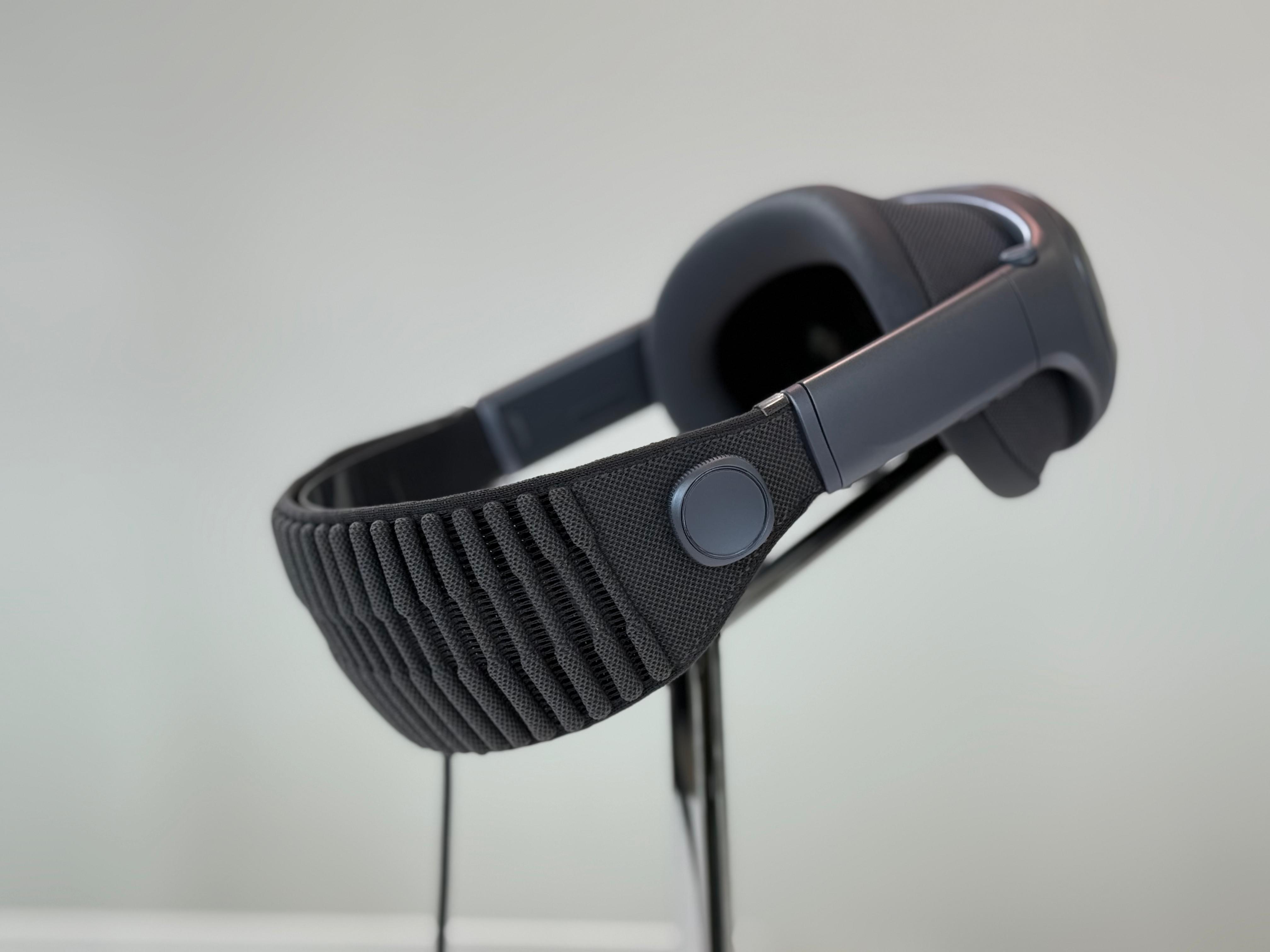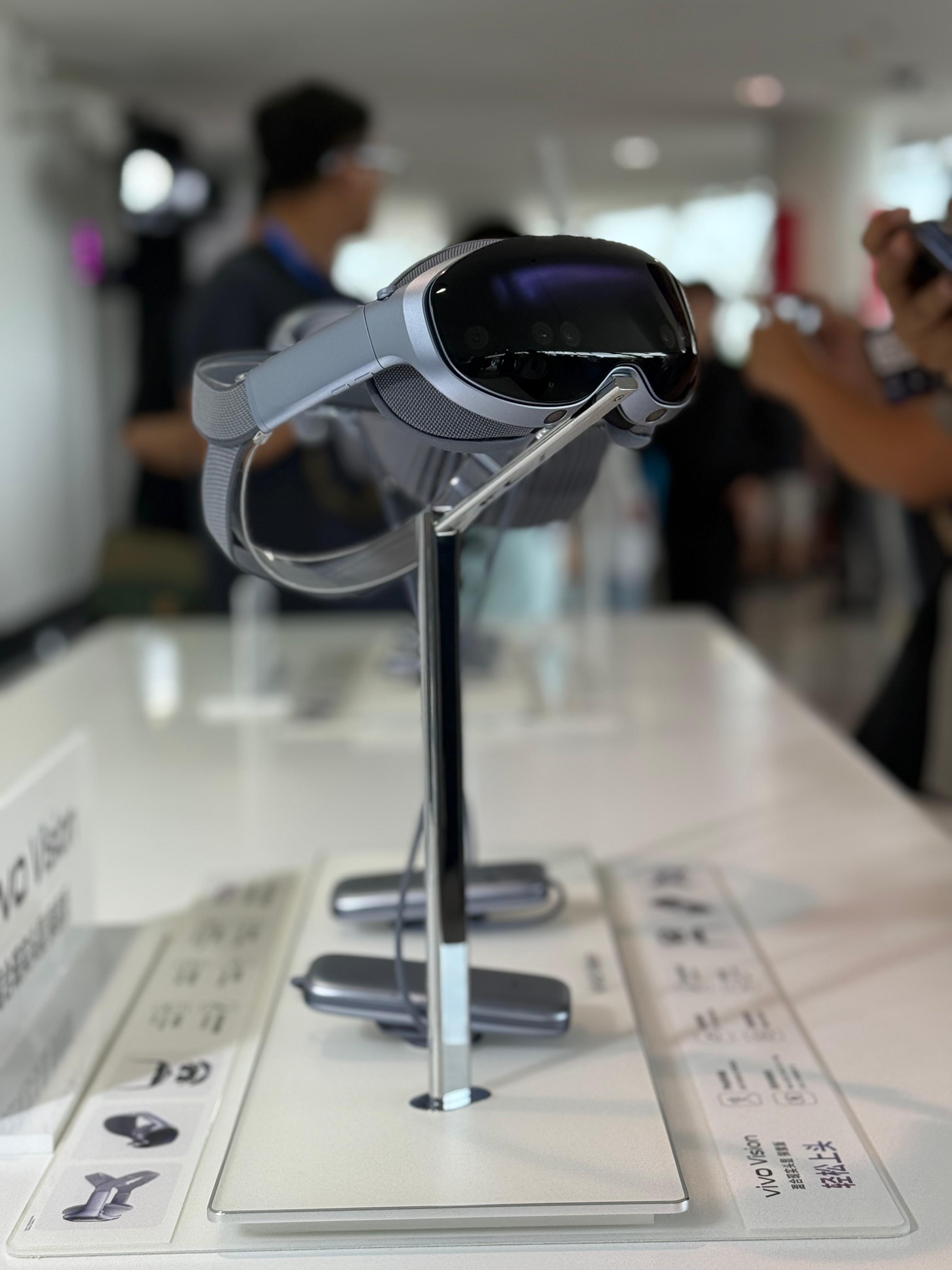Vivo announced its mixed-reality headset Thursday, marking its first foray into the extended reality market with a new operating system and device, taking on competitors like Apple, Meta, and Samsung.
The device, dubbed the Vision Discovery Edition, is Vivo’s answer to Apple’s $3,500 Vision Pro and Samsung’s soon-to-launch Project Moohan headset. Vivo showcased the headset for the first time at its 30th anniversary event in Dongguan, a city known as a major manufacturing hub and just an hour’s drive from Shenzhen, China’s Silicon Valley.
Vivo refers to the device as its first mixed-reality headset, utilising both augmented reality and virtual reality to merge the digital and physical worlds. The headset bears an uncanny resemblance to Apple’s Vision Pro and is made from a metal frame and has plastic, glass, and fabric. However, unlike the Vision Pro, which critics have noted is heavy, Vivo’s headset weighs only 398 grams, with a height of 83 mm and a thickness of 40 mm. Vivo claims its headset is 26 per cent smaller than the industry average.
The headset’s eye tracking system allows users to control the interface by looking at and tapping with their fingers. The Vivo Vision uses tiny microOLED displays with high pixel density and resolution. It also allows you to record 3D videos and capture spatial photos, but you will need select Vivo smartphones to use it.
Vivo has spent four years on user research and R&D to develop the headset. The device contains 1,800 components, and creating it was similar to building a personal computer, a Vivo executive said on stage. Vivo isn’t launching the headset this year and is instead taking a feedback from consumers and developers by setting up demo zones in select Chinese cities.
Vision Discovery Edition design
The headset features three-dimensional controls using hand and finger gestures, similar to those of the Apple Vision Pro and Samsung’s Project Moohan. Cameras are visible on the front lens of the physical headset, and a digital crown allows for scrolling and adjusting the display’s opacity. The device offers four sizes of light seals and eight foam padding options, ensuring comfort during extended wear.
The Vivo Vision will allow users to consume content and interact in new ways within their surroundings, something neither smartphones nor personal computers can offer. The headset can be used to watch movies, with Vivo claiming the screen can appear as large as 120 feet wide. It is powered by Qualcomm’s Snapdragon XR2+ Gen 2 platform. Vivo has also developed its proprietary operating system called OriginOS, designed for the headset.
Story continues below this ad
 The device offers four sizes of light seals and eight foam padding options, ensuring comfort during extended wear. (Image: Anuj Bhatia/The Indian Express)
The device offers four sizes of light seals and eight foam padding options, ensuring comfort during extended wear. (Image: Anuj Bhatia/The Indian Express)
Vivo’s concept of ‘extended reality’, a term commonly used by tech companies to market their headsets, is not very different from that of Apple and others in the market. During the event, Vivo teased a future where headsets like these become the new default, with face-worn computers at the centre of our digital lives.
However, the market for such devices has yet to take off. For instance, Apple’s $3,500 spatial computer is hardly an overnight success, but at that price, it was never expected to be. It may be the most advanced standalone VR/AR headset available, but tech companies have yet to figure out how these devices can become powerful tools that coexist with smartphones and personal computers, or eventually replace them.
“All smartphone makers are looking for new lines of revenue, and this means investing in other areas,” Ben Wood, Chief Analyst at CCS Insight, told indianexpress.com. “Spatial computing is one of the big bets given the billions that Meta and Apple have already invested, but the market is not developing as quickly as previously anticipated. This launch might give Vivo a small boost, but I am sceptical that Vivo Vision will have a huge impact on the brand at this stage.”
The Vivo Vision connects to its own battery pack the size of a phone, lasting two hours.
Story continues below this ad
Challenges ahead
But as technology rapidly advances from displays to chips, mixed or extended reality is poised to benefit in the next phase of computing, with companies pouring billions into the technology. However, much depends on how quickly the market develops for these immersive devices, while improvements in display technology, cost reduction, and battery life remain critical factors.
Another major challenge is how companies can develop compelling immersive applications and productivity suites that truly convince consumers to buy these headsets, moving beyond occasional productivity apps and random games. Companies also need to figure out how well these headsets integrate with existing smartphones and computers, especially as tech firms continue to emphasise that consumers will rely on multiple devices at the same time.
 Vivo’s headset weighs only 398 grams, with a height of 83 mm and a thickness of 40 mm (Image: Anuj Bhatia/The Indian Express)
Vivo’s headset weighs only 398 grams, with a height of 83 mm and a thickness of 40 mm (Image: Anuj Bhatia/The Indian Express)
“Vivo has been highly successful in expanding its smartphone business in India, China, and Southeast Asia over the last few years, and growing in the premium segment is the next critical step. It likely relates to R&D reaching a key milestone, making it more sensible to move forward rather than wait for someone else to tackle the major hurdles, even if the immediate sales potential is limited,” said Runar Bjørhovde, Analyst, Canalys.
Bjørhovde believes that if Vivo is able to undercut Apple’s Vision Pro with a lower price, it could benefit the brand. He, in fact, sees similarities between the Vivo Vision and the effectiveness of the SUV in boosting Xiaomi’s other verticals.
Story continues below this ad
Future of VR and mixed-reality devices
Despite the current small market for headsets, companies aren’t slowing down the development of VR and mixed-reality devices. Meta is working on the Quest 4 VR goggles, as well as a new high-end model that could eventually succeed the Quest Pro mixed-reality headset. Google’s new Android XR operating system is intended to bring a wave of headsets and glasses, with Samsung first in line to release devices.
Apple, meanwhile, is unlikely to ship a new head-worn device in 2025, but is likely working on both a successor to the Vision Pro and a lower-cost headset.
 Vivo teased a future where headsets like these become the new default, with face-worn computers at the centre of our digital lives. (Image: Anuj Bhatia/The Indian Express)
Vivo teased a future where headsets like these become the new default, with face-worn computers at the centre of our digital lives. (Image: Anuj Bhatia/The Indian Express)
However, for many companies, the ultimate goal is to ship augmented reality glasses that offer experiences similar to a headset but without the bulk. Meta, Snap, and Alphabet’s Google all aim to lead the AR race, with all three companies developing prototypes of AR glasses that explore the ability to overlay digital displays onto the real world. Demos of such devices offer a peek into what augmented reality technology is capable of, and a pair of glasses that could replace smartphones may no longer be a far-off dream.
But as companies continue to experiment with standalone mixed-reality headsets and augmented reality glasses, simple glasses equipped with cameras and artificial intelligence have gained popularity. Meta has found success with its Ray-Ban smart glasses, which don’t have a display but can handle tasks like recording video and making phone calls.





Average Rating